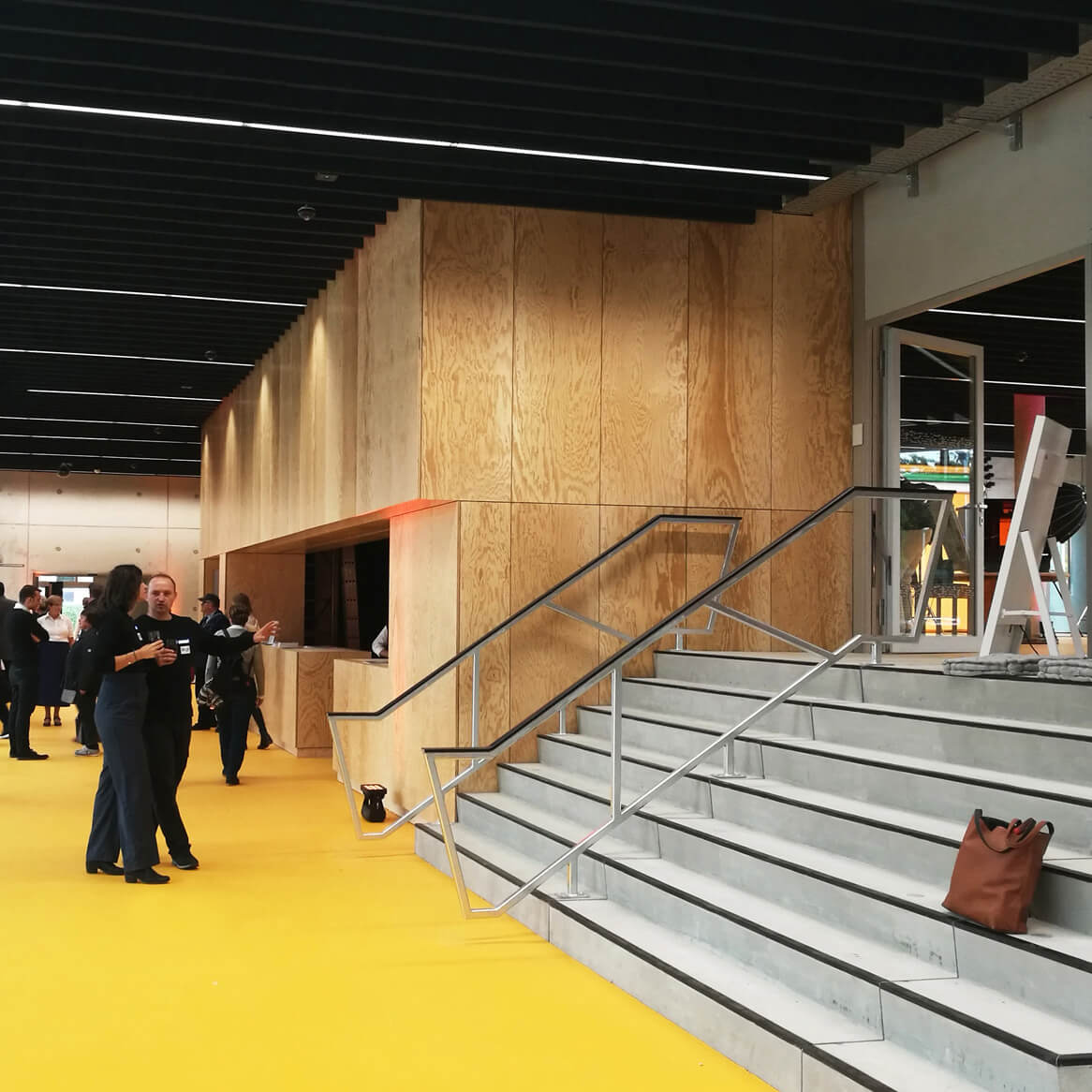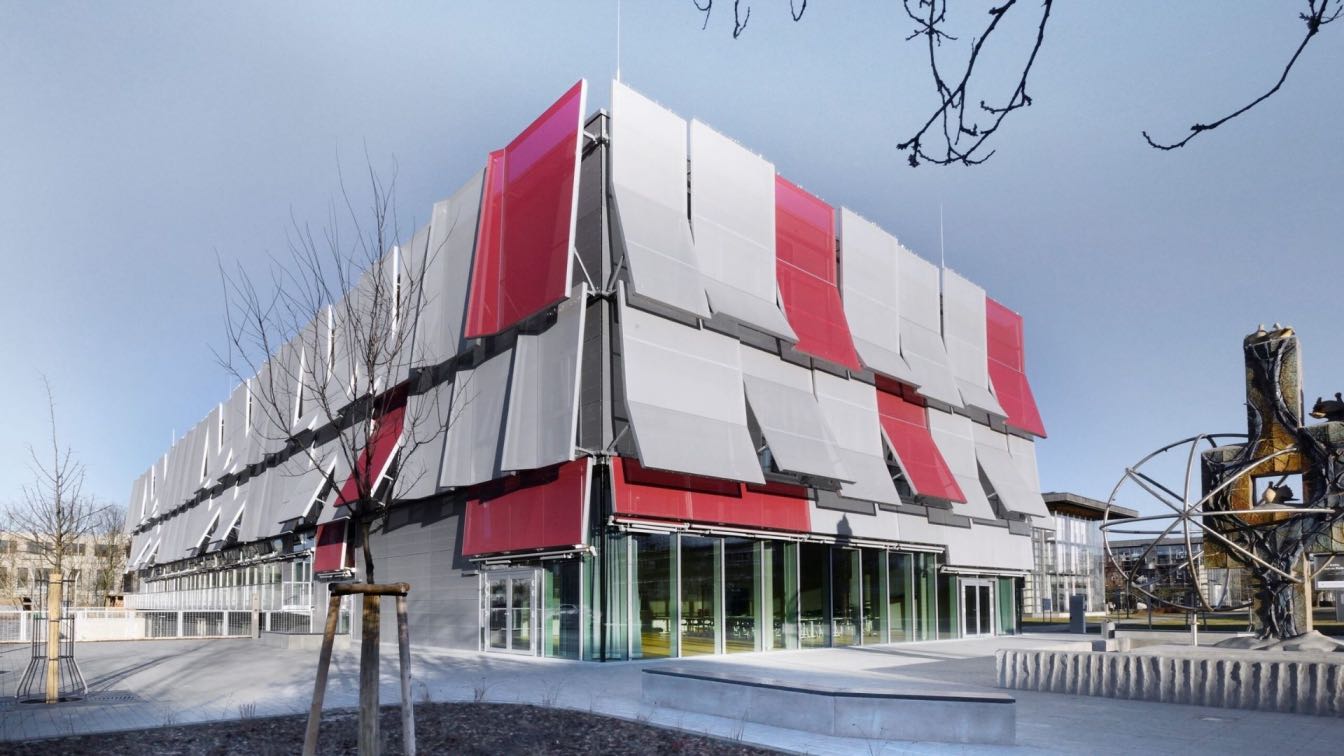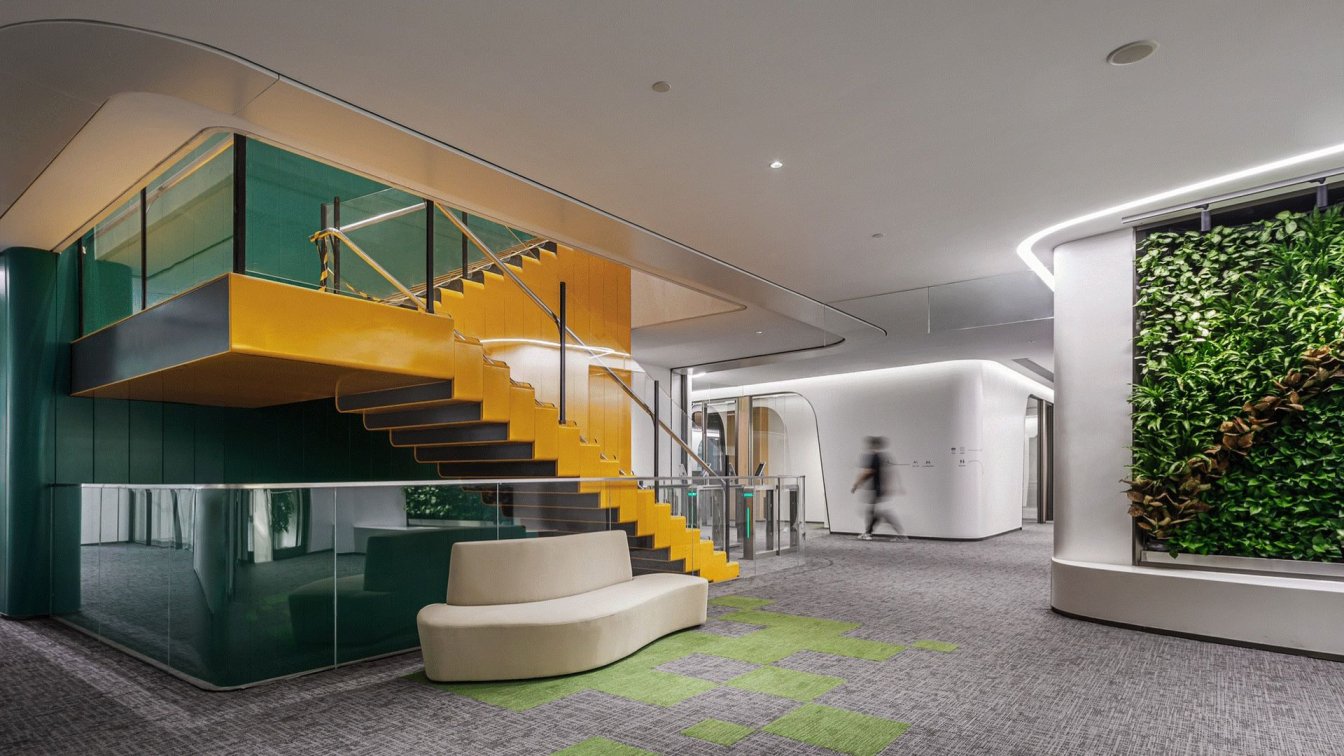Jens Brinkmann of United Architektur was one of the Design Architects for the Start-up incubator and co-working space in Cottbus that officially opened on October 15th 2021. The building aims to promote innovation and creativity to generate new forms of work in both the city of Cottbus and the surrounding Lausitz region in the wake of the political decision to phase out coal nationwide. Located next to the campus of the Brandenburg Institute of Technology (BTU), it concentrates tech start-up activities in a single center while adding another resourceful community building to the city.
The design is a fusion of innovation and technology, analogous to the building’s start-up program. The structural and environmental design decisions embodied in the materials, optimised construction methods and sustainable energy systems reflect the architects’ strong intention to future proof the building.

Public Threshold
The building’s architecture welcomes community use. The ground floor becomes emblematic of this idea with its predominantly glazed facade. It creates a transparent connection between activities inside the building and in the public square. Combined with the textile shading elements projecting out into the sidewalk, the interior space becomes a natural extension to the sidewalk, street and new community square.
Multi-Functional Foyer
The entrance foyer and the ground floor workshops form the communicative center of the building. The foyer is a multifunctional space, serving simultaneously as an access zone, public work area and lounge with a coffee bar. The level difference between the entrance and the area for workshops is designed as a staircase and seating grandstand for informal presentations and events. The foyer’s facade can be opened up to place outdoor seating beneath the extended marquees.

Multi-layer Facade
The building has a hybrid structure made of timber, concrete and steel. With the collaboration of strong industry partners, new sustainable techniques and materials were explored to implement into the facade’s design. The exterior facade is made of perforated textile panels fixed to metal frames that provide shading and act as semi-transparent screens for working areas of the building. These screens create a visually dynamic appearance from the street that reflects the character of the start-up culture.
Behind the shading screens, the wall is clad with perforated aluminium sheets in front of a black UV resistant membrane. Prefabricated timber wall panels are fixed in front of the concrete slab structure and are left exposed on the inside.
Co-working Office Spaces
The large co-working office spaces on the 1st floor contain desks that can be rented by start-up founders. Further working spaces with mobile partition walls and independent offices can be found throughout the building. Furniture was sourced from the Spanish interior design company, Dynamobel. The prefabricated timber wall panels are exposed from the inside. Alongside the concrete columns, acoustic baffles, lighting fixtures and ventilation systems form part of the buildings transparent design aesthetic and expression of materials.
Small conference rooms and communal amenities such as kitchenettes and chill-out zones are located in the central spine of the 1st and 2nd floors. Other formal meeting spaces of varying sizes are distributed throughout the building. The upper conference room and the adjacent terrace support the flexible working requirements of the start-up businesses.
Interior Design Details
The building has design features that complement its creative working environment. Colour plays an important role, highlighting service corridors, and publically accessible spaces, including the vivid red public elevator in the west wing. Following the transparent design aesthetic, metal grating run the full height of the stairwells.


























